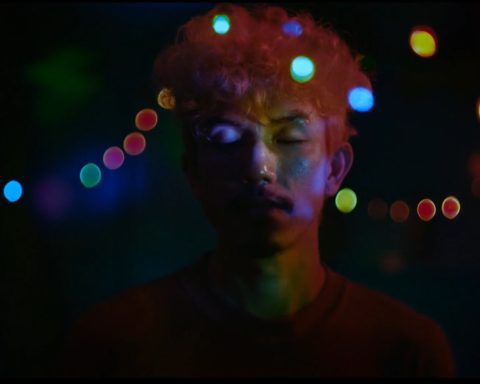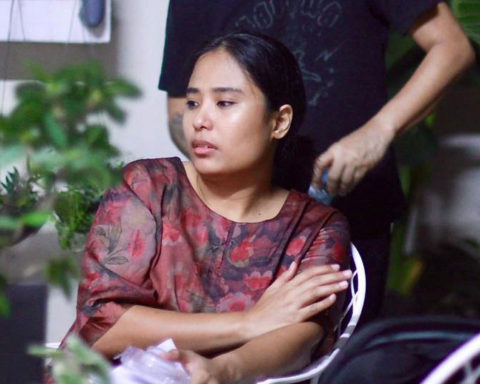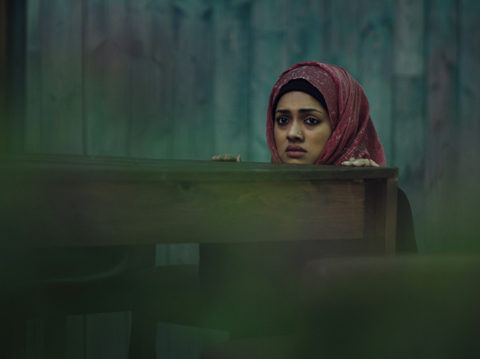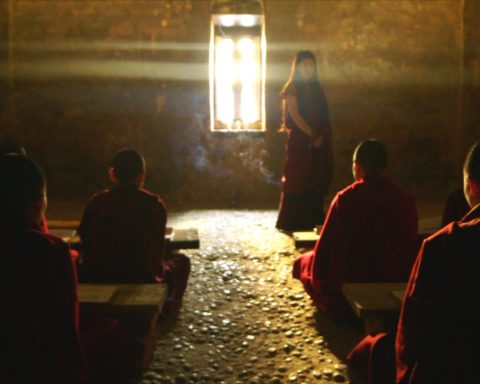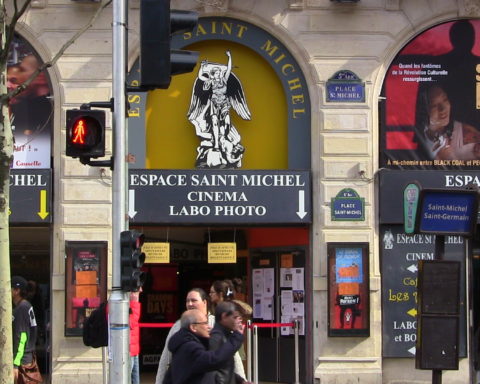Lav (Lavrente Indico) Diaz, born December 30, 1958 in Cotabato, Mindanao, is a Filipino filmmaker that is also a screenwriter, a producer, an editor, a cinematographer, a poet, a composer, a production designer and an actor. One of the most notable characteristics about Lav Diaz’s films is their length (some are more than 11 hours long). His films often address political and social issues and more specificially the struggles of his people throughout History and that is what earned him the visibility and admiration from the best international film festivals.
Lav Diaz made 12 films since 1998 and received numerous international awards, including Locarno Golden Leopard (‘From What is Before’ in 2014), Berlin Silver Bear (‘A Lullaby to the Sorrowful Mystery’ in 2016), Venice Golden Lion (‘The Woman Who Left’ in 2016).
The French public only became familiar with Lav Diaz’s cinema in 2013 when ‘Norte, the End of History’ was introduced at Cannes Film Festival at Un Certain Regard. A full retrospective followed at Jeu de Paume in Paris in 2016 as well as the release of ‘Death in the Land of Encantos’ and ‘The Woman Who Left’ in French theaters. With ‘Season of the Devil’, it’s the fourth time a Lav Diaz film is released in France.
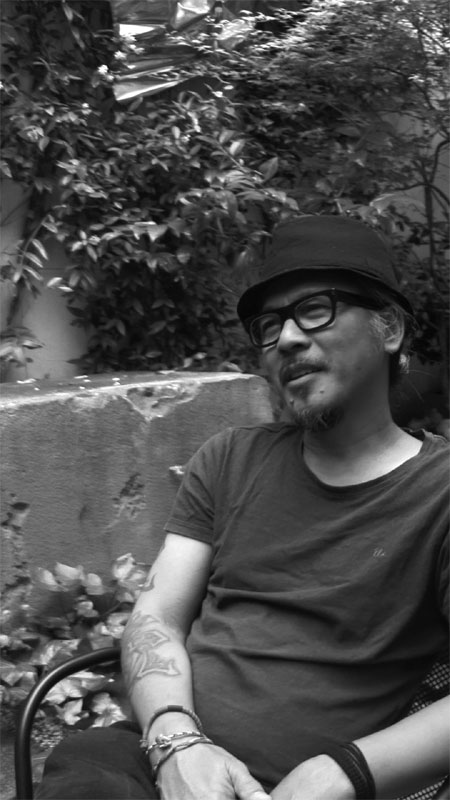
How did the idea of a ‘rock opera’ occur to you?
I was at Harvard University in September 2016 for a residency program. Part of my project with that residency was to write a script for a gangster film called ‘When the Waves are Gone’. I also started writing a book about Filipino cinema called ‘A liberated cinema’. I started writing songs as well -the songs kept coming. We had a new president back home at that time (Rodrigo Duterte was elected in May 2016). And things drastically changed as I read the news about the country: the so called drug war became really bloody in terms of human rights abuses, specifically during the first months of Duterte’s tenure. So I started addressing the issue, again going back to the struggles of my people. And this fed the themes of the songs I was writing that kept haunting me. Then around November, I e-mailed my producer Bianca Balbuena and I requested from her we put aside the gangster film because my focus now was into doing some kind of an opera, a musical about what’s happening in the country. There was a sense of emergency. I told her we needed to do this so that we could at least do our part in addressing the issues of what was happening in the country. It was a question of responsibility as an artist. Bianca agreed and we focused ourselves right away. I told Hazel Orencio to start working on the casting as well. We decided to shoot the film in Malaysia. By mid-January, we already started the production in Malaysia. We completed the shooting in Malaysia around the first week of March 2017 and edited the film for about three months in Manila.
Would you say your art is dictated by a sense of emergency? Are your films responses to ongoing events like for ‘Death in the Land of Encantos’, a nine-hour film you started shooting only a few days after typhoon Reming hit the Bicol Region in November 2006 (even though it was first meant to be mere footage with a testimonial value)?
In the case of ‘Encantos’, the immediacy of what I saw became the inspiration of the film. I lived in that region for a year. I got there 5 days after the storm and everything was devastated.
I had no plan indeed. I just went there to shoot and maybe give the footage to the news bureaus. After a few days of shooting and recording, it was so heart-breaking, horrifying, harrowing, I watched the footage and thought maybe I should build a story around and it’d be better to do it that way, it can be a good memorial, some kind of a tribute, in homage to what the place used to be. I thought of characters I could focus on in the continuing narrative of what can be done. So I invited those three characters, Roder, Angeli Bayan, Perry Dizon…
So, yes, it’s a response. Not just a response, there is an urgency, a call: it’s a responsibility to do it, to engage in what’s happening, using the medium. As a filmmaker that’s all I can think of I can do. Maybe I can make a film about it, to raise some awareness, confrontation with the coming cataclysm.
The most immediate advocacy medium for me is cinema.
It’s almost the same process for ‘Season of the Devil’, except that the idea -though inspired by ongoing events- preceded the shooting.
Why did you shoot ‘Season of the Devil’ in Malaysia?
There were two reasons. 1) It was very risky to shoot the material in the Philippines -the police are everywhere, checking everybody. Shooting in the Philippines would have required police permits and they’d be watching. And they’d have sensed: ‘Oh, the film is about our guy…’. They’d have checked in on us all the time and we wouldn’t have been free. The other reason is we have two very popular actors, Piolo Pascual and Shaina Magdayao. It’s hard to shoot in the Philippines if you have those superstars: if fans found out, we wouldn’t have been free either! In Malaysia, nobody cared because they didn’t know us. And the village we shot in looked very much like what we were looking for.
How about the rock opera form?
Music as an art form came to me before cinema. In college, I joined several bands, I wrote songs and also poems. I was more specifically into rock music: three quarts four quarts. That kind of pattern, the verse and the refrain and then you go back. Writing songs is a very fluid activity for me. That’s probably why the songs of ‘Season of the Devil’ spontaneously came to me. When I decided to do the film though, I did not want anything close to the conventional musical as we know it (the Broadway or Hollywod way, with the movements, the dancers, the big bands, the accompaniment etc.). We did without those things, we did it a cappella and used the songs as dialogs. It wasn’t important to have really good singers: as long as they could actually sing, even in a very raw manner, as long as they could follow the beats and remember the melody, then it was fine. The real stake was more about the actors’ political perspectives or leanings. Since the film is about fascism and its rebirth in the Philippines, even though it’s set in 1979, we could obviously not run the risk to work with anybody pro-Duterte or pro-Marcos. We had to be very careful about that criterion.
Your films are known for their long takes and their long shots, not to mention the recurrent use of black and white. Can you come back again to that trademark of yours for the readers who might discover your films only now? Can you also explain how different ‘Season of the Devil’ is to that effect?
I grew up watching a lot of black and white films -my father used to take me to the movies every weekend and I watched up to eight films a week. All kinds of films: Hong Kong movies, western movies, Japanese films etc. -always in black and white! Cinema is in my head, in black and white. The world is so full of colors. If you see it in black and white, it’s a whole new universe, it’s another way of seeing the world. That alone is very important, the aesthetic sense that it’s our universe but it’s another universe. For me black and white is very mysterious and it makes us see things differently.
The pursuit of truth is the genesis of my long struggle with film praxis; the struggle to embrace a mise en scene that can approximate or just appropriate the discourse on truth; even on a theoretical level, as truth is relative, elusive; as a principle, mythologizing is the enemy, or, the more colloquial word, compromise; for practitioners of cinema, application remains the key to the struggle for the truth; the application of which I found on my use of the long take and the discipline of one-frame shot; even with my actors, the long take or one frame shot they’d realized to be a more useful/truthful framework in the delineation of characters they’re portraying because their flow is bothered by cut-to-cuts or full coverage shooting, which is the convention.
I don’t really think about length when I make films. I’m a slave to the process, following the characters and the story and where they lead. I immerse the actors first; I tell them about the scene, maintain conversations with them on set but do not instruct them. I trust the actors and I just follow them with the camera where they lead. Everything is very organic. It’s my method. As a matter of fact, my films are not long, they are free. I just keep shooting and shooting once there’s an idea. When I watch the footage later, if I think there’s still more to be done, I have to shoot it. Perhaps I think this way because, with regard to the history of my people, we don’t really have a concept of time, we just have a concept of space. Time is a very Western concept for us. The space in Asia is very archipelagic: we have the islands, we have everything, and we’re governed more by nature than time. In fact, we, Malays, are governed more by space and nature than conventional time.
For ‘Season of the Devil’, I adjusted to the rhythm, to how the characters performed the verses, the songs. The cutting of the film was dictated by the rhythm, the beat. I struggled with that. I did very long takes. But at the end of the day, once the singing stops, there’s a big lull and it feels awkward not to cut. I said: the long long takes won’t really work. There’s a long silence, they’re not doing anything, they couldn’t say anything more. There was no two ways about it.
The film alludes to a number of concepts, surrealist or folkloric references…
‘Season of the Devil’ is very conceptual indeed: there are a lot of mythological perspectives in the film, it’s an allegorical thing, I used symbols, animals, semiotics… I used folklore and paganism: the owl, the snake, the traitor, and I also used some Western culture mythological figures such as Narcissus to create the character of the head of the village, the two-face Janus guy. Likewise, Teniente is a composite of those fascist military leaders that existed during the Marcos years. Having a woman actor (Hazel Orencio) portraying a male persona was part of the concept. Teniente is a brutal macho lieutenant, the head of a military unit. All those people are based on real characters.
Generally speaking, your films are very conceptual –they use strong aesthetics, metaphors, symbols to address political issues and denounce abuses. They’re also in black and white and usually pretty long –this one is almost 4 hours long and it can go up to 10 hours… Aren’t you afraid you films may be perceived as elitist, meant for an elite audience only?
There’s a key thing to understand: you can educate people without compromising your work. Or should the films be less than two hours for instance? That’s a compromise! Art is not about complying with conventions and archetypes. At the same time, I am convinced cinema can change the way we see and perceive things. It’s the most powerful medium. I do have faith in cinema. It can change the world. I believe so. That’s why it’s important to propagate it. Festivals, film programmers, distributors, universities play a key role to that effect. We also have to find alternative ways to reach people the Socrates way. Go the plaza, to the markets and talk to people. We should bring uncompromising cinema to people by engaging them: we have to reach out to people and also tell them to do sacrifices as well -forget about popcorn, coke etc. [laugh]
In the case of ‘Season of the Devil’, cinemas are very limited indeed. There should be other venues or we should be mobile, go to campuses, reach out to people. You have to find places, to create venues and the dialogue between art and people. Netflix is a venue too, why not? Just as long as the film is not compromised. Streaming is part of cinema now.
You have to find places, to create venues and the dialogue between art and people. Netflix is a venue too, why not? Just as long as the film is not compromised. Streaming is part of cinema now.
You make films about the dysfunctional politics of your country. Have you ever met any kind of pressure or resistance in doing so?
Not until now because no matter the international recognition gained by the festival awards, I’m still a curiosity more than a reality in the Philippines, i.e. an artist among intellectuals, the artists’ community, the academia… But among the masses, I’m still an obscurity, a curiosity. They maybe know the name or the face but they don’t know the work although I’ve been questioning the policies implemented by the different dictators and corrupt regimes of our country for a while. The safety comes from not being seen by the masses. Maybe one day… then will come the danger.
Masses don’t like uncertainty… Is it the reason why we witness the rise of populism in so many countries?
The problem is ignorance, that’s the reason why there are rising populist leaders everywhere. But there’s also a lack of actual engagement among the people that are aware of what’s happening -the intellectuals, the elites, the so called experts. Associating with each other only has cut them off from reality, leaving the masses by themselves. Look at the greatest institutions in the US for instance (Harvard, Stanford, Columbia) but what do they have? Trump. So we need to engage more: do not confine education to campuses. We need to reach out to the masses, break the walls and barriers while standing up for our convictions.
You once said the Philippines is the less Asian of Asian countries.
It’s a question of perception that is connected to religion. In the Philippines, 90% of the population is catholic, catholicism and christianism being Western concepts that date back from the colonial times -the Philippines was first a Spanish colony then an American colony. A lot of people perceive us as non-Asian for those reasons, because of the American influence. It’s a weird perspective but it’s real.
The fact is Filippino people are actually Malays. And we’re not less Asian than Malays just because we’re catholic. We know we are Malays but we don’t understand why we are Malays. It’s a big problem with our psyche. Again we need to engage the past, to confront the past. The thing we need to understand is we have histories before they created our history based on their impositions. Our history now is based on their histories. Whose history are we dealing with? The written history that’s imposed by the Western media and colonial heritage with their ‘national heroes’? We need to have our own version of it, based on the truth that we had before they created our truth.
Likewise, we have to correct what ‘Asia’ is about. It is true though that the notion of ‘Asia’ is just a discourse, a perception. Who is Asian? Even the Soviet block considers itself as Asian. The meaning of the word Asia is just semantic indeed.
Asia is both an issue and a non-issue. What’s most important is the discourse, how you explain the ‘label’. For instance ‘Asian film festivals’ is another venue for discourse and how to correct things about what Asia is. Asia is more a geopolitical than cultural concept.


